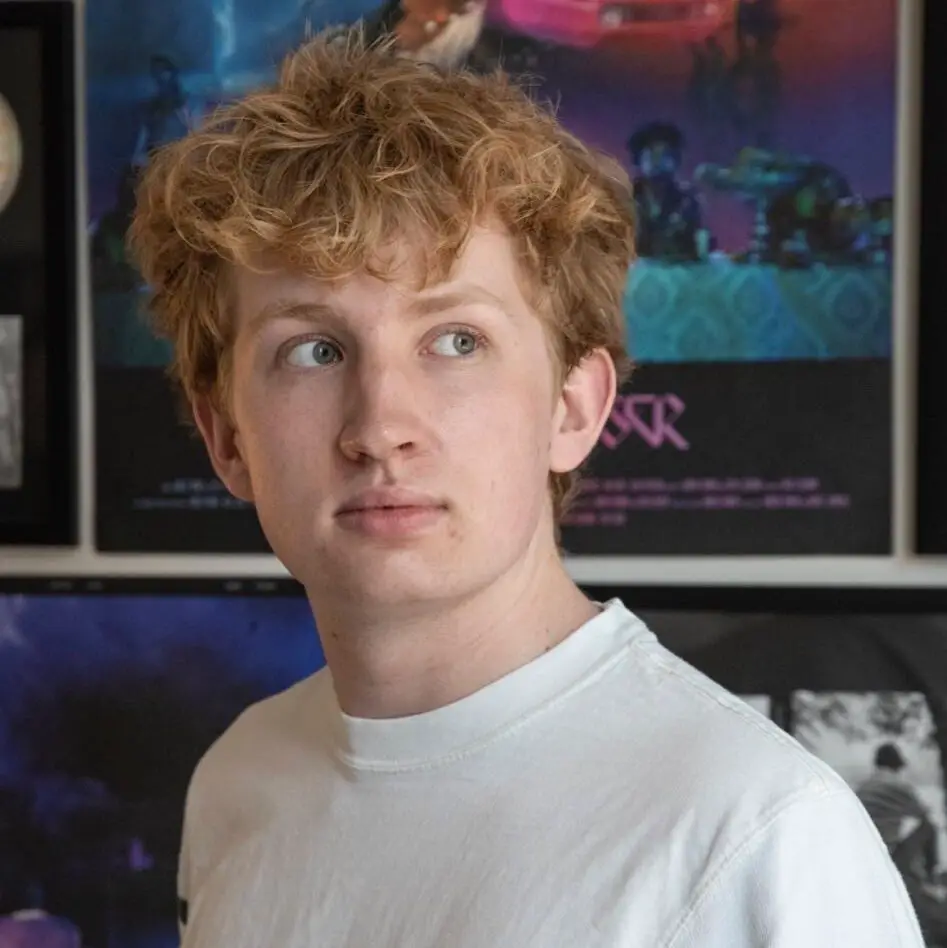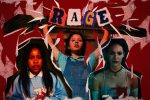Ten years ago this month, Lana Del Rey’s music video for “Summertime Sadness” was uploaded to her YouTube channel. Uploaded on July 20, 2012, many fans vividly remember the first time they watched the video. Especially those fans like myself, who were listening at 11 years old, discovered a world in which it was okay to sing about your sadness. Those same pre-teens are now in their 20s, and still embrace their “summertime sadness” every year.
The video for “Summertime Sadness” opens with 15 seconds of vintage-looking footage of a cloud-filled sky at sunset. This practice is a staple of Del Rey’s music videos from this era of her career, also seen in her 2011 breakout single, “Video Games.” Del Rey uses clips like this to establish her specific aesthetic visual style that accompanies her music. Like in many of the music videos from this era of her career, footage of couples kissing, American flags blowing in the wind, iconic Hollywood locations like the Chateau Marmont and countless clips of California fill the screen to drive home the classical yet fresh aesthetic she so deeply seems to love.
When the opening chords to “Summertime Sadness” kick in, they are dreamlike and immediately fill the listener’s mind with the image of a Californian sunset, leading into dusk. Yes, that may sound intense and dramatic, but that’s the thing about Lana Del Rey’s music. All of her songs can easily be associated with an image in the listener’s mind. This makes perfect sense, with many of her lyrics referencing celebrity figures of the old Hollywood era, and almost always connecting back to the state of California.
Most of her 2012 debut album, “Born To Die,” centers around the motif of old-school California. Del Rey sings about feeling different from others, driving late at night along the coast and reminiscing about old times. Her musical choices and image as an artist almost make it seem like she was born in the wrong era because of the constant nostalgia present in her work.
No time is wasted in showcasing Del Rey’s “sadness.” She emerges on top of a tall hillside and raises up her arms before slowly falling off the edge. Del Rey co-stars alongside friend and actress Jamie King, who was married to the music video’s director at the time. Jamie King and Lana ride beside one another in a vintage-looking car, take turns emerging in and out of clouds of smoke and dance together throughout the duration of the video. Jamie King’s character ends up on a bridge, taking the same jump Lana did at the start.
The central story “Summertime Sadness” aims to tell is of one of Del Rey’s friends taking their life, and Lana having to live with the memory of them afterward. Overall, it’s a very dark theme, but not out of the ordinary for the music everyone would come to know her for.
So, what’s so special about “Summertime Sadness”? Try to put yourself back in 2012, and think of the type of music that was popular. Dance and EDM music dominated the popular music sphere with help from songs like Icona Pop’s “I Love It” and Nicki Minaj’s “Starships.” When Lana Del Rey released her debut record featuring songs like “Summertime Sadness,” “Born To Die” and “Blue Jeans,” she tapped into a completely new market of music consumers.
Her ability to craft small aesthetic worlds for each of her songs to live in was something completely different from what was happening in pop music. At its core, “Summertime Sadness” is a pop song, but stands out for its dark yet romantic-sounding lines like, “I’m feelin’ electric tonight / Cruisin’ down the coast, goin’ bout 99 / Got my bad baby by my heavenly side / I know if I go, I’ll die happy tonight”
“Summertime Sadness” gives a bit of hope to those who grapple with their own melancholic feelings. In her work, Del Rey doesn’t urge listeners to drop their emotions, but embrace them and feel as strongly as they need to. In a broader sense, listeners connect with her because they feel seen and understood for not always being optimistic.
Lana Del Rey’s ability to turn her sadness into art permeates the rest of“Born To Die” as well. Released in January 2012, the album influenced an entire generation of new artists’ work. Her often melancholic yet idyllic take on music can be found in the work of Billie Eilish, Halsey and Lorde. Each of these artists frequently border the line between alternative and mainstream pop, a trend started by Del Rey. Her frequent references to eras long gone allow her listeners to live in a different time even just for a few minutes.
Fans have long credited Del Rey for making them nostalgic for eras they weren’t even alive for, often through her lyrical references and nods to old-school style. For example, fans continue to adore the 1960s theme of the “National Anthem” music video, in which Del Rey plays Jackie Kennedy and Marilyn Monroe opposite A$AP Rocky as President Kennedy. Her debut musical era established her as a visual artist just as much as a recording artist. Whether her music videos are grandiose or not, they are deliberate with their themes. “Summertime Sadness” offers up a blend of both, mixing self-shot footage with high production clips to create a clear representation of Del Rey as an artist.
Lana has found empowerment in expressing all her emotions, good and bad. Her sorrow on “Summertime Sadness” resonates just as much as her optimism does on “Radio.” When listening to any of Del Rey’s discography — especially her early work — she is always unapologetic for “sneakin’ out and lookin’ for a taste of real life” or allowing herself to “run run run” if a past lover calls.
As fans reflect on 10 years of having that “summertime sadness” and feeling “born to die,” they acknowledge a turning point for alternative pop music earning a “seat at the table” in mainstream culture. A decade later, the impact of “Summertime Sadness” can still be heard.

















